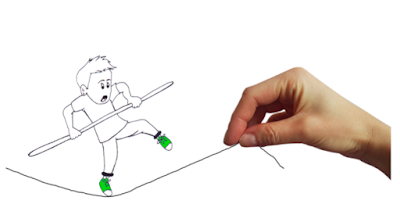From Flip Books to Apps: Get Ready to Animate
By Guest Blogger: Frankie Caplan
Animation has been around for over a century, but its use in academia is still a fairly new phenomenon. The dawn of what we would think of as ‘traditional animation’ occurred in 1908 with the world’s first animated film.
While effective at capturing the attention of the audience, the technique didn’t become mainstream until the release of Snow White and the Seventh Dwarves in 1927, going on to become popular on television in the late 50s, after which it got increasingly common in children’s shows and advertisements.
Today’s animation is no longer reserved for entertainment industry and it’s time educators embrace its potential for the educational process.
There are some simple reasons for animation becoming so effective in both advertising, business communications and education; the ability to create an attention grabbing mini-world. Distinct from reality and using shapes and colours motion graphics make it easier for young, but also adult, audiences to engage with the content. For this reason animation is an incredible tool in education. Instead of selling someone on a product or idea, as a traditional advertisement would, academic animation allows children (and even adults) to understand a subject matter they’re having trouble visualising.
 As the visual is already created for them their mind is then free to engage without restraint with the subject, which will in many cases allow an audience to develop a more comprehensive understanding of complicated subjects. Visual demonstrations have been shown to be a powerful tool in educating young minds, as it supports the student’s cognitive processes. It’s even been suggested that the multi-sensory aspects of animation overcome the barriers of students learning in different ways, allowing a whole class to learn at the same pace, as well as the obvious advantages of encouraging student creativity and breaking up the normal teaching structure.
As the visual is already created for them their mind is then free to engage without restraint with the subject, which will in many cases allow an audience to develop a more comprehensive understanding of complicated subjects. Visual demonstrations have been shown to be a powerful tool in educating young minds, as it supports the student’s cognitive processes. It’s even been suggested that the multi-sensory aspects of animation overcome the barriers of students learning in different ways, allowing a whole class to learn at the same pace, as well as the obvious advantages of encouraging student creativity and breaking up the normal teaching structure.
While creating animation for academic purposes used to be long and time consuming, it’s now much easier, especially with the influx of animation startups and freelancers. Still, as with any lesson plan, the first step should be carefully planning how your animation can have the maximum impact. Plan the world you’re going to introduce to your students based on their age and the subject. For instance, for an English lesson the animation could mirror the texts you’re reading, including characters or settings, but for science lessons a more abstract approach will be beneficial in improving students understanding of the subject matter.
You may also believe that animation only takes place on a computer or projector, but don’t forget that now everyone carries around powerful computing devices with them at all times. Instead of having your students put away their phones, there are a variety of apps that will allow you to create basic animations and pass them on to your students, an ideal way of engaging their attention in class or at home. Even if you want to stick to the traditional and make the animation yourself, there are many apps that will let you create animated teaching resources quickly and at little to no cost; some are even specifically designed for children.
For younger audiences, you can also consider engaging them with one of the oldest style of animations available: flip books. Purchasing flip books in bulk and then having your students draw their animations on the corners is a great way to lead a creative, engaging lesson while helping their minds process a variety of subjects again and again. Animations can also help children to learn lessons outside the typical learning environment, such as in cases of home schooling or even evening classes.
Ultimately, the benefits of using animation in the education process are clear. It allows for greater creativity and motivation among the students, encouraging them to engage with the subject matter while simultaneously making it easy for them to understand it.
Are you using animation in the classroom with your students? Share your videos, pictures and ideas here! Got questions for our author just leave a comment below!
Frankie Caplan is an animator and video marketing specialist interested in visual storytelling and applying animation to business projects. You can find her writing at Pigeon Studio and follow her on twitter.
You can send her a tweet @FrankieCpln
Join our Facebook Group to share your ideas with Teaching with Technology:






